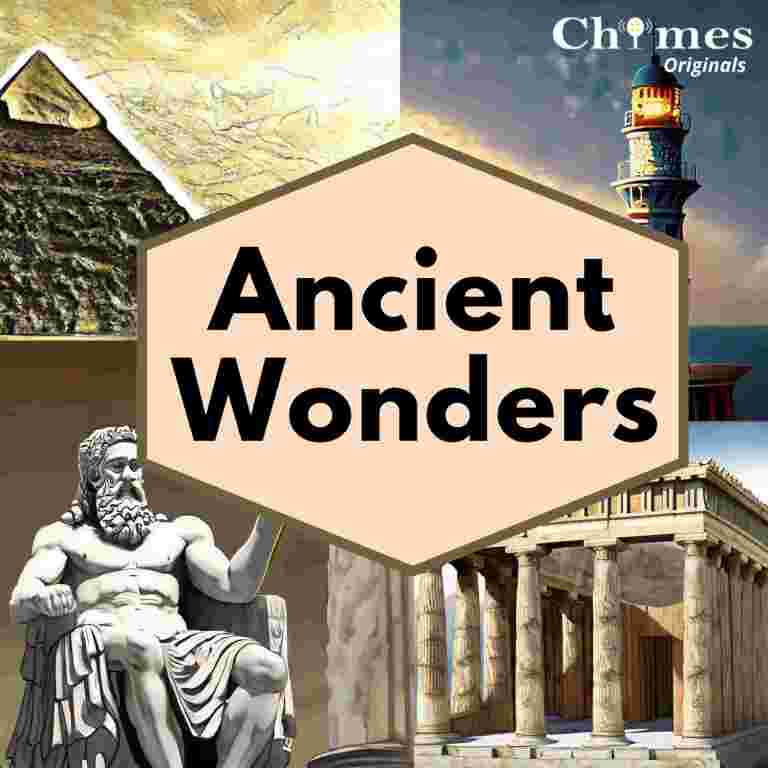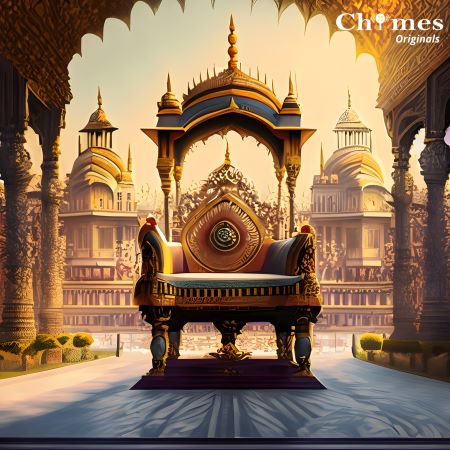What Are Dynasties?
Dynasties are hereditary families or lineages that hold power or authority over a particular region or state, often ruling for multiple generations. They typically pass leadership, control, or ownership from one member of the family to another through a line of succession, which can be based on bloodline, inheritance, or established rules of ascension.
The expanse of ancient Indian history resonates with the legacies of influential dynasties, each leaving an indelible mark on the country’s culture, governance, and societal evolution. From the Mauryas to the Cholas, these ruling families orchestrated defining eras in India’s historical narrative. Let’s delve deeper into the ten most pivotal dynasties that forged the rich tapestry of ancient Indian history.
List Of Top 10 Dynasties Of Indian History
1. Maurya Dynasty
The Maurya Dynasty, reigning from 321 to 185 BCE, stands as a monumental epoch in ancient Indian history. Founded by Chandragupta Maurya, it reached its zenith under Emperor Ashoka. Initially a small kingdom in present-day Bihar, it rapidly expanded to become one of the most extensive empires in Indian history, covering a vast expanse of territory.
Emperor Ashoka’s reign stands out for his transformative embrace of Buddhism after the bloody Kalinga War. This event led to a profound change in his leadership approach, prioritizing moral governance and spreading the principles of dharma. His edicts, inscribed on pillars across the empire, advocated ethical conduct and social welfare.
The Mauryas established a robust administrative system, creating efficient bureaucracy and a centralized governance structure. They implemented innovative policies in agriculture, trade, and infrastructure, furthering the empire’s prosperity. This period witnessed notable advancements in art, architecture, and literature, with pillars and rock-cut caves standing as enduring examples of their architectural legacy.
2. Gupta Dynasty
The Gupta Dynasty, spanning from 320 to 550 CE, epitomized India’s “Golden Age.” Under rulers like Chandragupta I, it ushered in a period of extraordinary cultural and intellectual achievement. The era was distinguished by advancements in literature, science, and the arts. Literary luminaries like Kalidasa and scientific minds such as Aryabhata flourished during this time, contributing significantly to Sanskrit literature and mathematical discoveries, including the concept of zero. The Gupta rulers’ patronage of the arts led to remarkable temple construction and sculptural finesse, exemplified by the Iron Pillar of Delhi.
This period marked a harmonious blend of Hindu and Buddhist influences in art, reflecting religious tolerance. Despite the eventual decline due to invasions and internal conflicts, the Gupta Dynasty’s contributions in literature, mathematics, art, and metallurgy left an indelible mark on Indian history, symbolizing a remarkable cultural and intellectual peak, shaping the nation’s heritage for generations to come.
Continue Reading About Dynasties Of Indian History Below >>
3. Chola Dynasty
The Chola Dynasty, spanning from approximately 300 BCE to 1279 CE in southern India, represents an epoch of remarkable cultural, maritime, and administrative achievements. Renowned for their maritime prowess, the Cholas were adept in trade and seafaring, expanding their influence across Southeast Asia. Their grand temples, exemplified by the Brihadeeswarar Temple in Thanjavur, stand as architectural marvels, showcasing their artistic and engineering finesse.
The Cholas were patrons of art, encouraging dance, music, and literature, and they significantly contributed to the development of South Indian temple architecture. Their governance was marked by administrative efficiency and a well-organized bureaucracy.
The dynasty also left a lasting influence on the cultural landscape of southern India through their naval expeditions, trade networks, and architectural masterpieces. Despite facing periods of decline due to invasions and subsequent rulers, the Chola Dynasty’s cultural and architectural contributions continue to resonate, defining a significant chapter in the history of South India.
4. Kushan Dynasty
The Kushan Dynasty, existing from approximately 30 to 375 CE, held prominence in the vast regions of Central Asia, present-day Afghanistan, and Northern India. Renowned for fostering cultural syncretism, the Kushans were instrumental in facilitating trade along the Silk Road, which connected various regions and facilitated cultural exchange. Under Kanishka the Great, they played a pivotal role in spreading Buddhism and promoting Gandhara art, a fusion of Greco-Roman and Indian artistic styles.
The Kushans left a lasting imprint on coinage, showcasing diverse religious and cultural influences. They developed an administrative structure that promoted religious tolerance and cultural assimilation, allowing various belief systems to coexist within their realm. However, their empire gradually disintegrated due to internal strife and external invasions, eventually leading to the decline of their rule. Nevertheless, their contributions to art, trade, and cultural exchange through the Silk Road remain a significant aspect of ancient Indian history and global cultural heritage.
5. Satavahana Dynasty
The Satavahana Dynasty, reigning from approximately 271 BCE to 220 CE in the Deccan region of India, played a pivotal role in fostering trade, governance, and cultural development. They established a strong presence in peninsular India, contributing significantly to the socio-economic and cultural landscape. Known for their strategic location, the Satavahanas facilitated trade routes and played a crucial role in maritime commerce. They were patrons of Buddhist art, promoting the creation of stupas and other religious monuments.
The dynasty’s rulers established an efficient administrative system, promoting land grants to support religious institutions and encouraging the development of regional arts. Though limited inscriptions and historical records exist, their cultural influence, particularly in trade and art, remains an integral part of the Deccan’s historical narrative. The decline of the dynasty was attributed to invasions and internal conflicts, leading to a fragmentation of their territories and the eventual dissolution of their rule.
6. Pallava Dynasty
The Pallava Dynasty, which thrived from approximately 275 to 897 CE in South India, left an enduring mark through its exceptional architectural and artistic contributions. Renowned for their rock-cut temples and sculptures, the Pallavas crafted magnificent structural marvels like the Shore Temple in Mahabalipuram, exhibiting intricate and detailed craftsmanship. Their architectural finesse combined diverse influences, incorporating elements from Dravidian and Buddhist styles.
The dynasty fostered a cultural renaissance, promoting literature, dance, and music, nurturing a vibrant artistic milieu. They maintained significant maritime trade links and played a pivotal role in South Indian naval dominance. Despite facing intermittent conflicts and territorial disputes, the Pallavas’ architectural legacy and cultural influence, particularly in temple art and South Indian architecture, remain a testament to their rich and enduring heritage, influencing the artistic and cultural landscape of the region for generations to come.
7. Shakya Dynasty
The Shakya Dynasty, prevailing from the 6th to the 4th century BCE, was notably associated with the family of Siddhartha Gautama, who later became known as the Buddha. Hailing from the Shakya clan, this dynasty wielded significant cultural and religious influence that extended beyond their temporal rule. Siddhartha Gautama’s teachings and subsequent establishment of Buddhism revolutionized spiritual practices, advocating a path to enlightenment and the cessation of suffering.
The Shakya Dynasty’s prominence primarily lay in their association with the life and teachings of the Buddha, marking a pivotal period in the development of Buddhism. Their cultural and philosophical influence, beyond their temporal governance, had a profound and enduring impact on shaping Eastern philosophical thought and spiritual practices, resonating across time and influencing the foundations of various belief systems worldwide.
8. Chalukya Dynasty
The Chalukya Dynasty, spanning from the 6th to the 12th century CE in southern and central India, was renowned for its architectural marvels, particularly their contributions to temple architecture. They were pioneers in creating intricate and detailed structural designs, exemplified by their rock-cut cave temples at Badami, Aihole, and Pattadakal, showcasing a fusion of Dravidian and Nagara styles. The dynasty’s rule witnessed advancements in art, literature, and cultural development.
They patronized various art forms, including sculpture and literature, contributing significantly to regional cultural heritage. The Chalukyas demonstrated a deep appreciation for the arts, fostering a period of artistic renaissance. Despite facing conflicts and periodic invasions, their architectural legacy remains a significant part of India’s historical and cultural heritage, influencing subsequent architectural styles and serving as a testament to their creative and artistic excellence.
Continue Reading About Dynasties Of Indian History Below >>
9. Haryanka Dynasty
The Haryanka Dynasty, reigning from around 600 BCE to 413 BCE, played a foundational role in shaping early Indian history. Established by King Bimbisara, this dynasty is recognized for setting the stage for Magadha’s prominence in the Indian subcontinent. Bimbisara expanded the kingdom through military conquests and diplomatic alliances. His son, Ajatashatru, continued this expansion, contributing to Magadha’s dominance. However, the dynasty faced internal strife, leading to the assassination of several rulers.
The most renowned ruler of the Haryanka Dynasty was Ajatashatru, credited with building the fort of Rajgir and establishing Pataliputra as the capital city. Despite their successes in territorial expansion and administrative advancements, the dynasty faced challenges, including succession disputes and political instability. Their era marked a significant phase in the development of Magadha and its transformation into a powerful kingdom, setting the stage for subsequent dynasties to further shape the region’s history.
10. Shunga Dynasty
The Shunga Dynasty, lasting from around 185 to 73 BCE, emerged after the fall of the Mauryan Empire. Founded by Pushyamitra Shunga, this dynasty held sway over North India, notably Magadha and its surrounding regions. They were known for reviving Hinduism after the period of Buddhist dominance under the Mauryas. However, their rule faced challenges, especially from Buddhist factions and other regional powers.
Under the Shungas, significant cultural and architectural achievements were witnessed. The creation of the Great Stupa at Sanchi and the development of art and architecture showcased their creative patronage. Yet, their reign was marked by frequent conflicts and internal disarray, contributing to their eventual decline.
Despite a relatively short rule, the Shunga Dynasty left an imprint on Indian art and culture, witnessing the revival of Hindu traditions and notable artistic accomplishments. Their era marked a transitional phase in Indian history, serving as a bridge between the Mauryan and subsequent dynastic periods.
FAQ'S about important dynasties of India
Which Mauryan king is regarded "Great"?
Ashoka, the Mauryan Emperor is considered “Great”
Which dynasty is known for its impressive architecture and art?
The Mughals, who built iconic monuments like the Taj Mahal and the Red Fort.
Which dynasty played a significant role in the Indian independence movement?
The Marathas, who fought against the British East India Company and later the British Raj.
Mughal Empire: A Tale of Power and Prosperity
Mughal Empire A Glorious Tale of Power and Prosperity Mughals:

Seven Ancient Wonders Of The World
Seven Ancient Wonders Of The World Listen To Ancient Wonders


Famous Indian Personalities
Indians who shaped our country- their struggles and accomplishments






